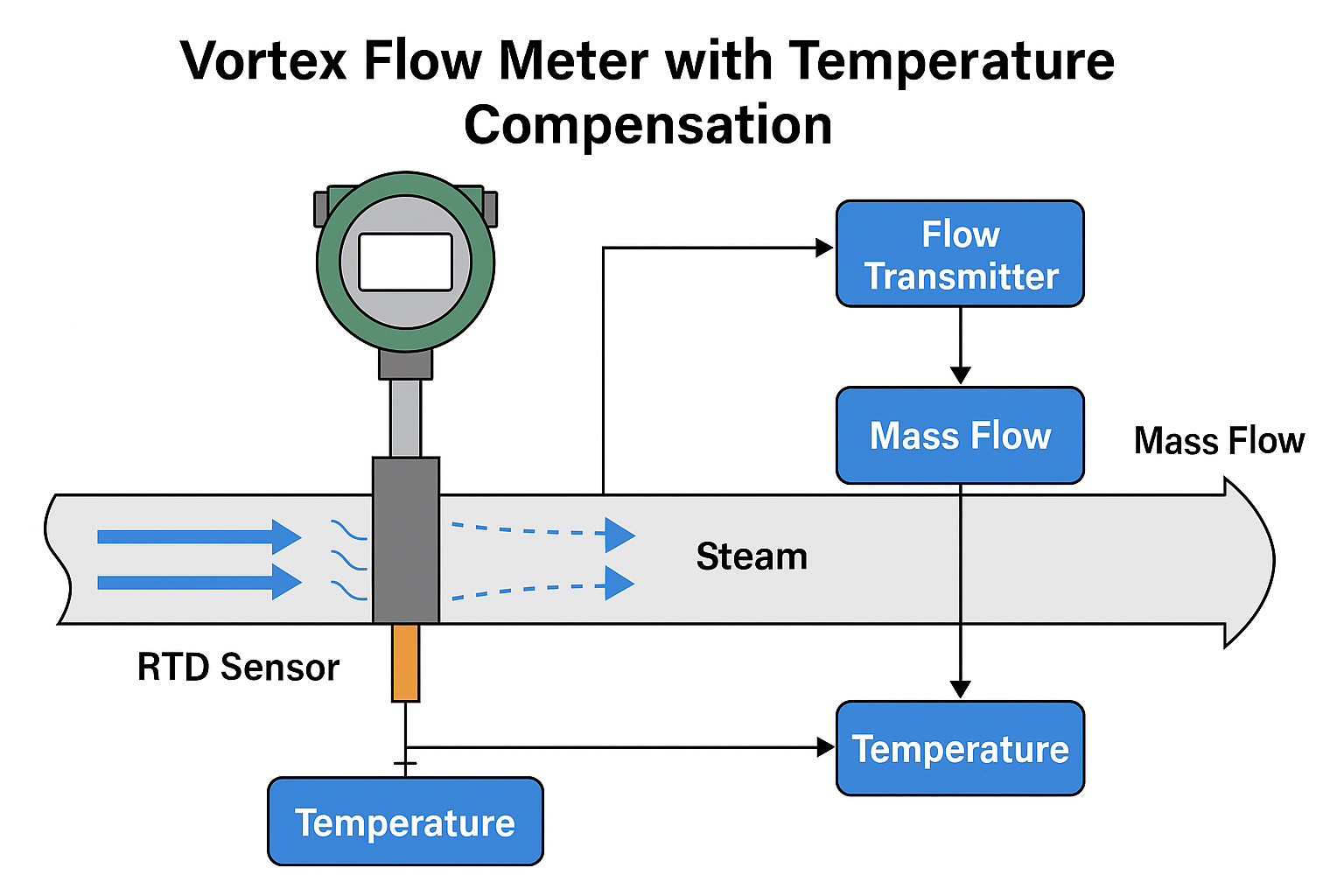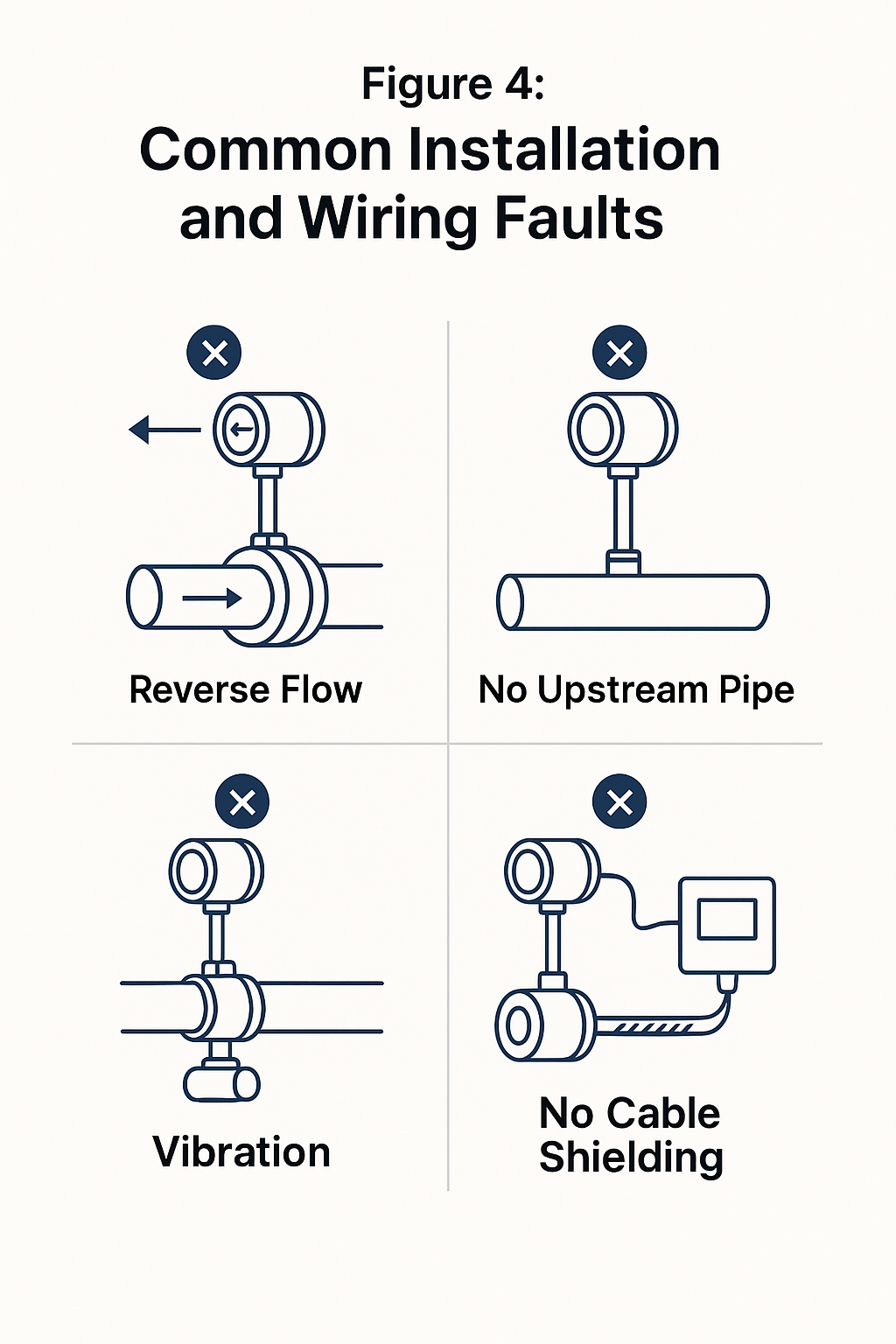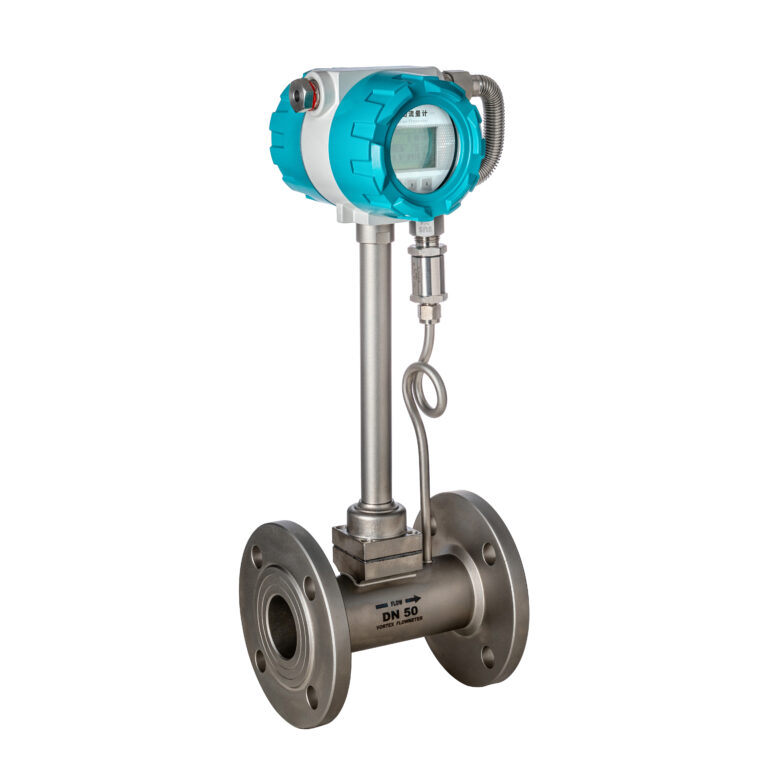1. Introduction
Brief overview of vortex flowmeters
Key advantages in industrial flow measurement (e.g., low pressure loss, high accuracy, minimal maintenance)
Typical application areas: gas, steam, and liquid flow measurement in pipelines

2. Operating Principle of Vortex Flowmeters
Explain Kármán vortex street principle
Schematic diagram of vortex generation
Highlight how piezoelectric stress sensors work to detect vortex shedding
3. Installation Requirements
Environmental considerations: avoid strong electromagnetic interference, high heat sources, and vibration
Straight pipe requirements:
Same-plane double 90° elbows: upstream ≥ 25D, downstream ≥ 5D
Different-plane double 90° elbows: upstream ≥ 40D, downstream ≥ 5D
Control valve placement recommendations
Alignment and vibration damping measures

4. Common Failure Phenomena and Solutions
Each sub-section will describe:
Symptom
Cause analysis
Recommended solutions
📌 4.1. Large Flow Difference Despite Stable Display
Cause: Misconfiguration in PLC/DCS (e.g., unnecessary square root extraction)
Solution: Review and correct configuration
📌 4.2. Sudden Zero Reading at Low Flow
Cause: Oversized meter diameter or high cut-off threshold
Solution: Replace with smaller diameter vortex meter to enhance sensitivity (insert diagram showing relationship between flow and sensitivity)
📌 4.3. Significant Error at High Flow Rates
Cause: Vortex shedding instability leading to “signal dropout” or “leakage of vortex counts”
Solution: Replace with a meter of higher capacity (insert diagram illustrating vortex signal attenuation at high flow)
📌 4.4. False Flow Readings When No Flow Exists
Cause: Vibration or electromagnetic interference producing spurious signals
Solution: Install isolators, apply vibration dampening, and adjust sensitivity carefully
📌 4.5. Abnormal Fluctuations and Large Errors
Cause: Insufficient straight pipe length, pipe eccentricity, or presence of debris
Solution: Inspect installation and clean sensor probe (insert diagram of proper installation conditions)
📌 4.6. Inconsistent or Frozen Readings
Cause: Strong vibration or electromagnetic interference overpowering vortex signals
Solution: Improve shielding, use vibration isolation, or consider alternative measurement technologies

5. Key Recommendations for Field Engineers
Always verify lower and upper flow limits during selection (provide formula for density and vibration effects on lower limit)
Avoid using large diameter vortex meters for low-velocity flows
Caution on using built-in pressure sensors due to potential inaccuracies
6. Conclusion
Reinforce importance of correct sizing, installation, and configuration
Suggest preventive maintenance tips
